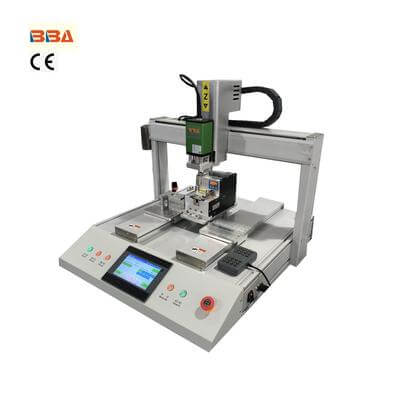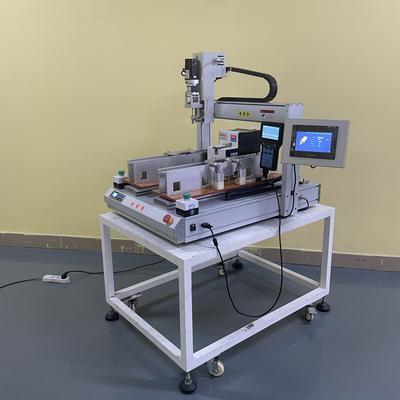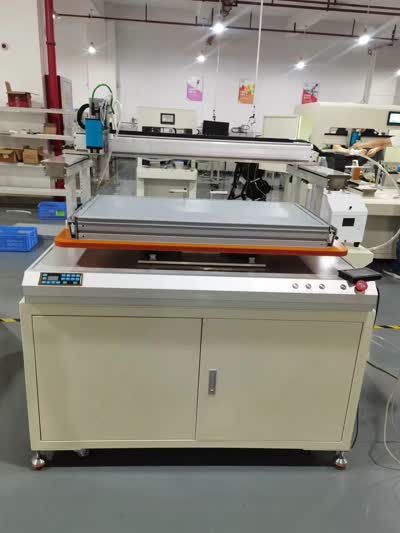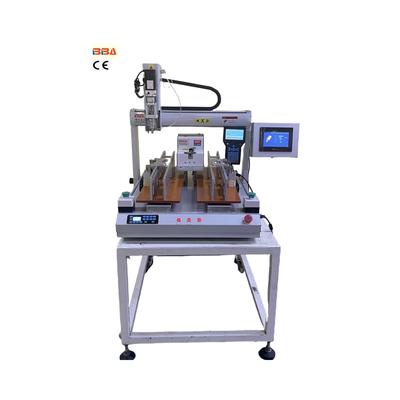Multi-Axis Screw Tightening: Precision Assembly for Electronics Production

| Product Name | Applicable industries |
| Smart Screw Driving Machine | Automotive Electronics Assembly |
Multi-Axis Screw Tightening in Electronics Production: Revolutionizing Precision Assembly
The relentless drive toward miniaturization and complexity in electronics manufacturing demands an unprecedented level of precision. As circuit boards grow denser and component sizes shrink, traditional screw-fastening methods become bottlenecks in production lines. Multi-axis screw tightening technology emerges as a transformative solution, redefining speed, accuracy, and reliability in high-volume electronics assembly.
The Precision Imperative
Modern electronics – from smartphones to medical devices – incorporate delicate components sensitive to minute variances in torque and alignment. Traditional single-axis screwdrivers or manual processes cannot maintain consistent angular accuracy or detect cross-threading across dozens of fastening points. A single under-torqued screw risks vibrational failure; an over-torqued one may fracture brittle substrates. These challenges multiply as products incorporate more screws in tighter spaces, elevating the risk of field failures, recalls, and rework.
How Multi-Axis Systems Elevate Assembly
Multi-axis screw tightening systems deploy synchronized robotic arms equipped with intelligent drivers that operate concurrently on multiple fastening points. Unlike standalone tools, these unified stations integrate several critical advancements:
- Parallel Processing: Four to sixteen axes work simultaneously, reducing cycle times by up to 70%.
- Adaptive Torque Control: Real-time sensors adjust rotational force per screw based on material feedback.
- Vision-Guided Alignment: Integrated cameras map PCB fiducial markers, guaranteeing ±0.05mm placement accuracy.
- Self-Correcting Mechanisms: Automated re-centering compensates for thermal drift or fixture variances.
Quality Through Data Intelligence
Beyond mechanics, multi-axis platforms embed Industry 4.0 capabilities. Each tightened screw generates metadata, including:
- Peak torque and angle measurements
- Thread engagement depth profiles
- Anomaly detection flags (e.g., stripped threads)
This data streams to MES/SCADA systems, enabling real-time SPC control and full traceability. If torque trends deviate beyond preset limits, the system halts production and flags the PCB panel – preventing defective units from advancing down the line.
Impact on Manufacturing Efficiency
The operational advantages extend far beyond precision. Multi-axis cells eliminate manual handling, reducing ergonomic risks and labor costs. Their compact modular designs fit seamlessly into existing SMT lines, requiring minimal reconfiguration for new products. Changeovers between PCB variants take minutes rather than hours through programmable recipes. Perhaps most crucially, First Pass Yield (FPY) rates increase by 15-25%, as automated consistency removes human-dependent variables like fatigue or torque calibration errors. Reduced rework translates directly to higher throughput and lower per-unit costs.
Future-Proofing Electronics Assembly
As IoT and 5G devices push functional density higher, the role of reliable, high-speed fastening intensifies. Multi-axis systems provide the scalability needed for next-gen products with intricate mechanical architectures. Emerging requirements – from carbon-fiber composites to shielded EMI enclosures – demand tightening solutions that adapt to exotic materials and stricter tolerances. By unifying precision mechanics with data intelligence, multi-axis technology transforms screw fastening from a mundane task into a strategic value center, accelerating innovation while guaranteeing quality at microscopic scales.
Adopting multi-axis screw tightening isn't merely an upgrade; it's a competitive imperative for electronics manufacturers targeting zero-defect production in era of exponential complexity. The future of assembly is parallelized, data-driven, and uncompromisingly precise.


